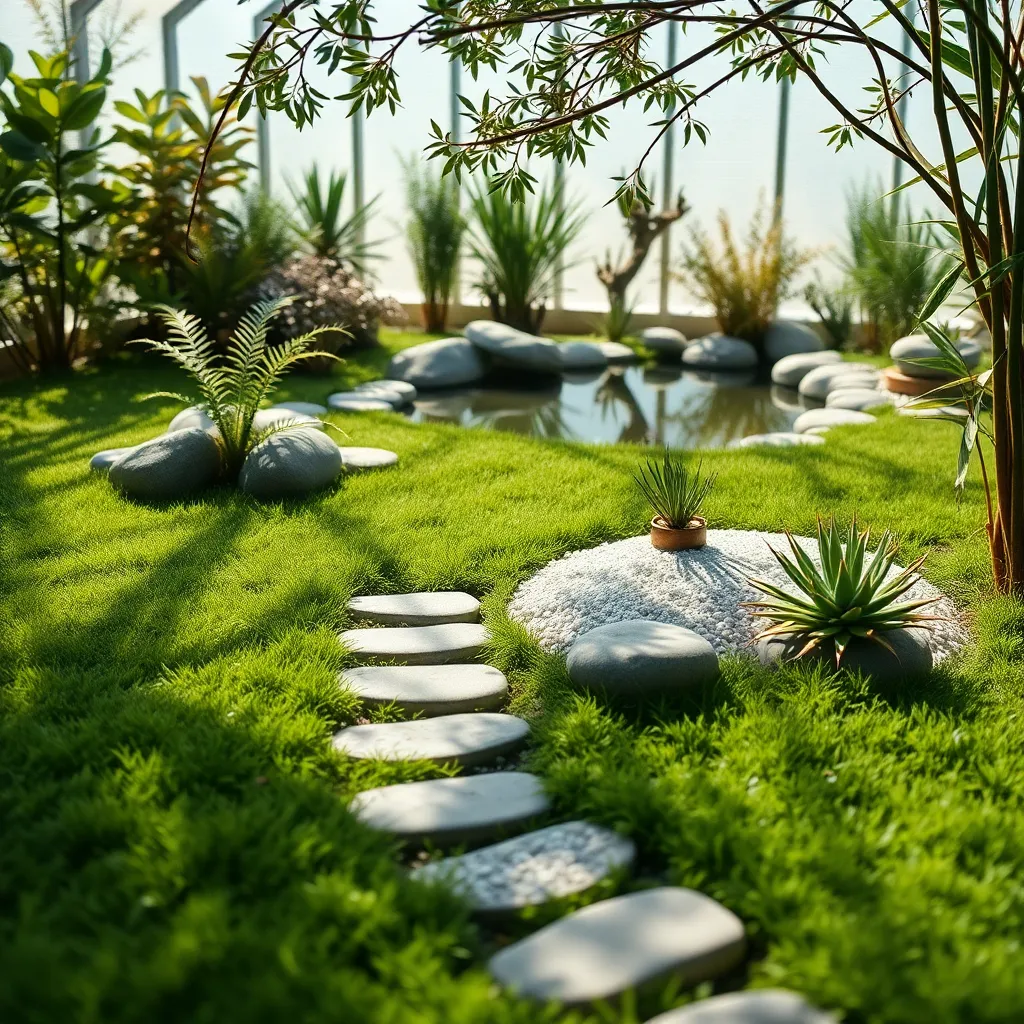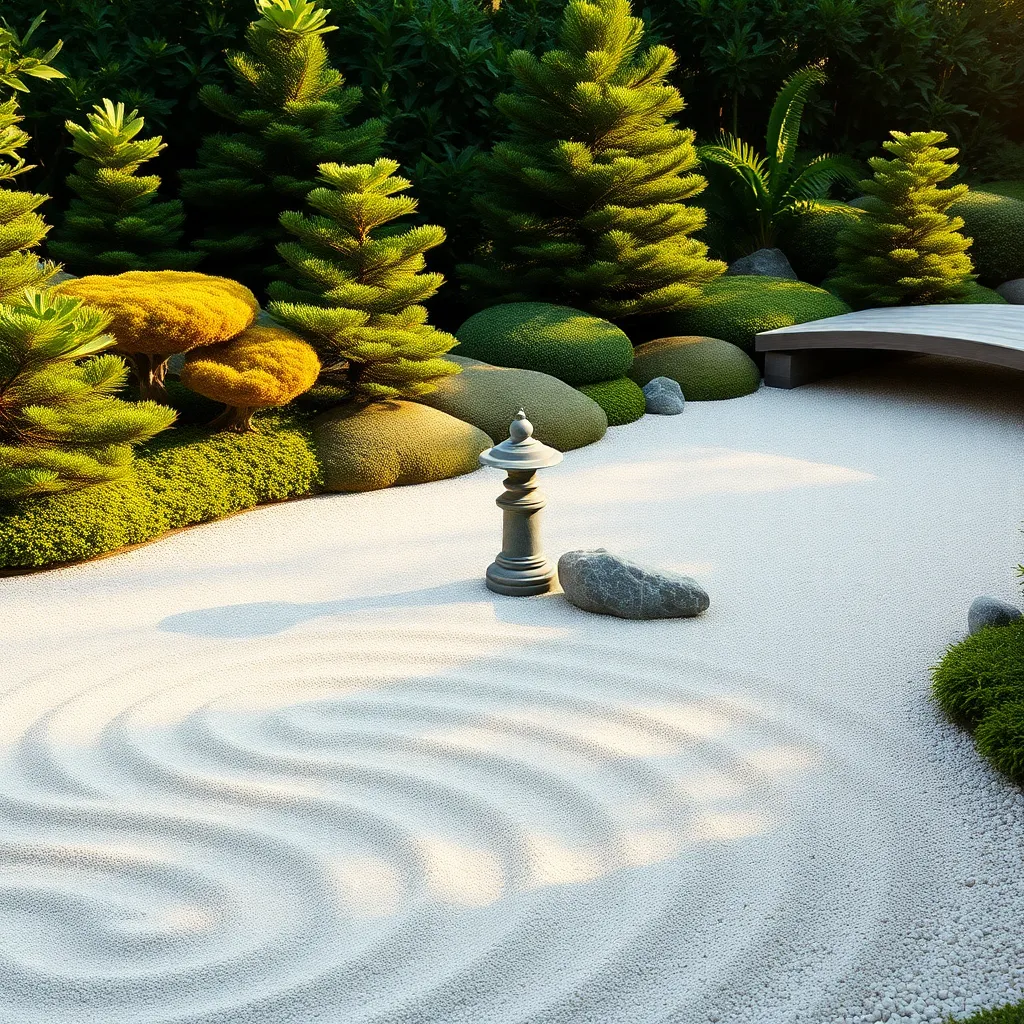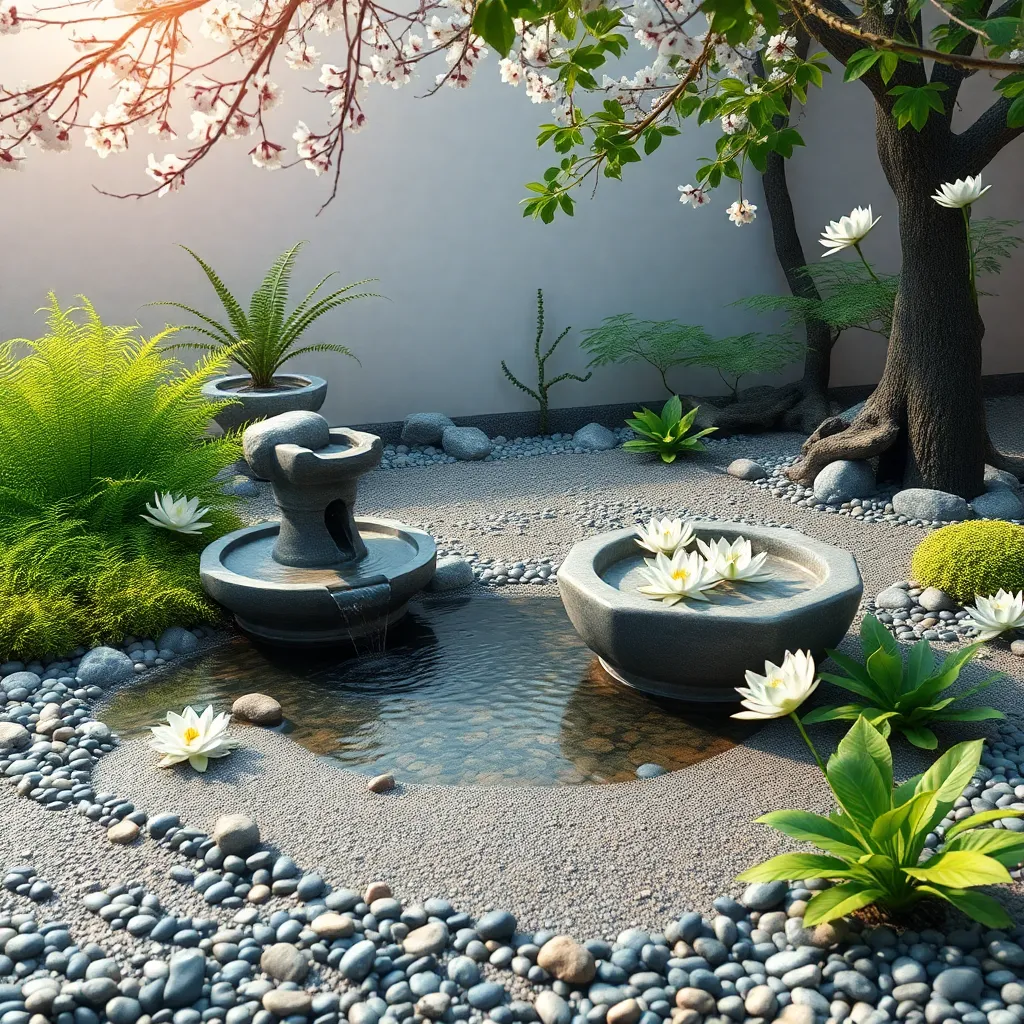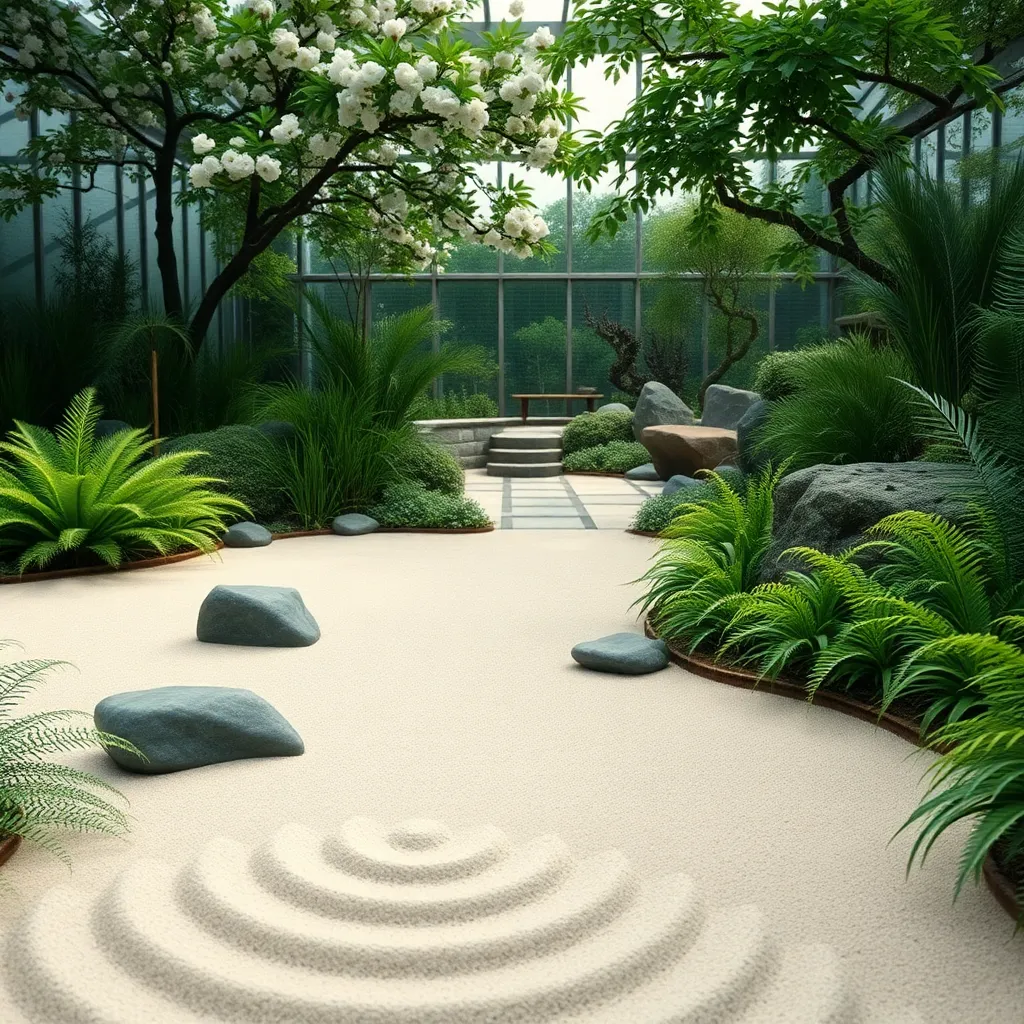Imagine stepping into your backyard and being instantly transported to a serene oasis of tranquility; that’s the magic of a Zen garden. Whether you’re a beginner with a budding passion for gardening or an experienced green thumb looking to explore new landscapes, creating your own Zen garden can be a deeply rewarding endeavor.
In this guide, you’ll discover a wealth of ideas to inspire and instruct you on setting up a Zen garden that suits your space and style. With practical tips and creative insights, you’ll gain the confidence to transform any area into a peaceful retreat, enhancing your well-being and enriching your gardening experience.
By embracing the simplicity and elegance of Zen design, you’ll not only craft a beautiful garden but cultivate a sense of calm and mindfulness. Dive into this guide with a sense of adventure and watch as your garden becomes a source of joy and relaxation, all while honing your gardening skills to new heights.
Select Smooth, Natural Stones

Choosing the right stones is essential to creating a serene and balanced Zen garden. Opt for smooth, natural stones as they embody the calming essence of nature and help achieve a harmonious landscape.
For beginners, start by selecting stones that have a consistent color and texture to create a unified appearance. These stones should be free of sharp edges, as their soft contours contribute to the tranquil atmosphere of a Zen garden.
Place larger stones strategically as focal points, while smaller stones can be grouped to form natural-looking clusters. This arrangement mimics the natural world and creates a sense of movement and flow within your garden.
Experienced gardeners can experiment with different stone sizes and shapes to add dimension and interest. Consider using a mix of pebble sizes to create paths or borders that guide visitors and enhance the garden’s overall design.
Incorporate Raked Sand Patterns

Raking sand patterns in a Zen garden can be a meditative practice that enhances the garden’s aesthetic appeal. Start by smoothing the sand with a flat rake, ensuring a level surface that sets the stage for your designs.
To create intricate patterns, use a rake with tines spaced according to the desired effect, such as close for fine lines or wide for bold impressions. Experiment with shapes and curves to mimic the natural flow of water or the ripples of a gentle breeze.
Consistency in maintenance is key; after heavy rain or wind, re-rake the sand to maintain the clarity of your design. This regular upkeep not only preserves the beauty of the garden but also provides a calming activity that reinforces the Zen philosophy.
Advanced gardeners might consider incorporating varying sand textures to add depth and contrast to their patterns. Choose sands of different coarseness to create subtle visual differences that can enhance the garden’s overall harmony.
Position a Tranquil Water Feature

To enhance the serenity of your zen garden, consider positioning a tranquil water feature. The gentle sound of water can significantly enhance the calming atmosphere, making it an essential component of your design.
When selecting a location, ensure the water feature is visible from your main seating area for maximum enjoyment. Choose a spot that receives partial shade to help keep the water cool and minimize algae growth, which can maintain both the beauty and functionality of the feature.
Consider the various types of water features, such as a small pond, a bubbling fountain, or a trickling waterfall. For beginners, a self-contained fountain can be a simple option, requiring minimal setup and maintenance.
Advanced gardeners might opt for a pond, which can support aquatic plants like water lilies and lotus. Ensure the pond is at least 18 inches deep to protect the plants’ roots from temperature fluctuations and to accommodate small fish if desired.
Regular maintenance is key to keeping your water feature pristine. Clean the pump and filter monthly to prevent clogs, and remove debris from the water’s surface to maintain clarity and prevent odors.
Plant Low-Maintenance Greenery

Bringing low-maintenance greenery into your Zen garden can create a soothing, effortless atmosphere. Consider plants like bamboo, ferns, and hostas, which thrive with minimal care and provide lush, calming greenery.
Choose plants that are adaptable to your local climate to ensure they flourish without constant attention. Bamboo, for instance, is a versatile option that can grow in a variety of soil types, though it prefers well-draining, fertile soil.
Watering frequency is another crucial factor for maintaining these plants. Ferns typically require consistently moist soil, so consider using mulch to retain moisture and reduce the need for frequent watering.
For those looking to add a touch of color, hostas are an excellent choice, offering vibrant foliage that requires only partial shade to thrive. Ensure they are planted in nutrient-rich soil and water them deeply once a week.
- Use organic mulch to maintain soil moisture and reduce watering needs.
- Test soil pH and amend it as necessary to suit the specific plant’s requirements.
- Regularly remove dead or yellowing leaves to promote healthy growth.
Incorporating these plants into your Zen garden not only enhances its aesthetic appeal but also aligns with the garden’s principles of simplicity and tranquility. With the right selection and a bit of initial setup, your garden can become a serene sanctuary that requires minimal ongoing effort.
Create a Balanced Layout Design

To create a balanced layout design in your Zen garden, begin by considering the natural flow of movement and visual harmony. Incorporate elements such as rocks, sand, and water features to create a cohesive and tranquil environment that invites reflection and calmness.
Start by arranging larger elements like stones and water features first, as these will act as the focal points. Position them in a way that they guide the eye naturally across the space, creating a sense of balance and structure.
Next, consider the placement of plants around these focal points to provide a soft contrast. Use low-maintenance plants like ferns or hostas, which thrive in various conditions and require minimal care, ensuring your garden remains lush and inviting throughout the year.
Incorporate a variety of textures and heights among the plants to add depth and interest to your garden. For a more advanced touch, create layers by placing taller plants in the background and shorter ones in the foreground to enhance perspective.
Finally, pay attention to the spacing between plants and features to allow for growth and ease of maintenance. Regularly trim and prune to maintain clean lines and prevent overgrowth, ensuring your Zen garden remains a serene retreat.
Conclusion: Growing Success with These Plants
As we explored the art of creating a Zen garden, we uncovered five invaluable relationship insights: the importance of creating a shared space for tranquility, the role of mindfulness in nurturing connections, the power of simplicity in communication, the need for balance and harmony, and the value of patience and growth. Each of these concepts serves as a stepping stone towards deeper, more fulfilling relationships.
To take immediate action, why not start by dedicating a small area in your home where you and your partner can unwind and connect? It could be as simple as a corner with calming elements like a candle or a small plant, fostering a shared retreat within your daily life.
Remember, the journey to relationship success is ongoing. Bookmark this article now to revisit these ideas whenever you need a gentle reminder or a fresh perspective. By integrating these principles into your daily routine, you’re setting the foundation for a loving, enduring partnership. Here’s to nurturing your bond and watching it flourish, one mindful moment at a time.

